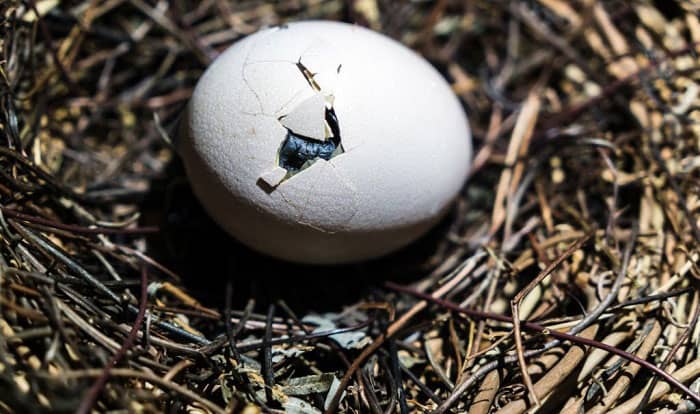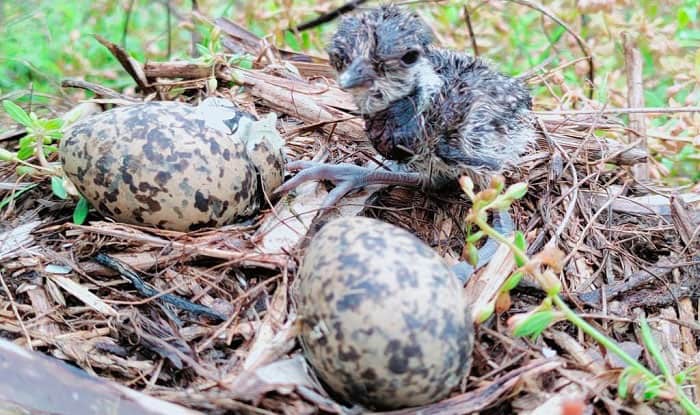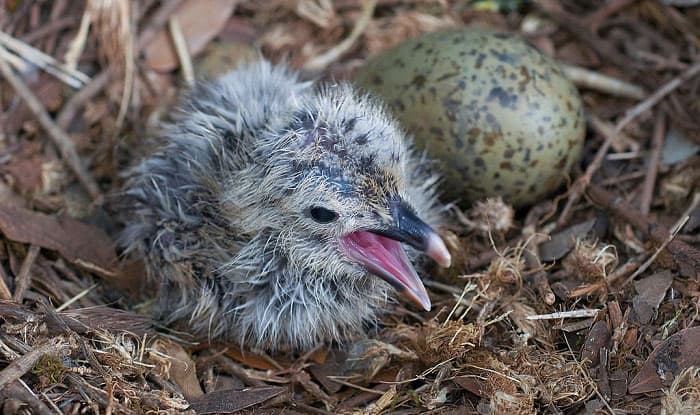Birds are gorgeous creatures, and they are utterly interesting. People are always in awe as the avians are in flight with their beautiful wings and the freedom they represent.
And it’s no surprise that bird enthusiasts are engrossed with everything that has to do with the life cycle of avians. Most especially, birders are curious about the incubation and hatching period of a young bird’s life.
So how long does it take for bird eggs to hatch? The time frame depends on the bird type. During incubation, the father hunts for food, and the mother keeps the eggs warm.
Nesting Cycle of Birds
Over 700 avian species in the country produce young ones during the breeding season. The nesting cycle of birds may be similar in many ways, but the time for how long for bird eggs to hatch varies for each type of avian. Before exploring the varying hatching time frame, let’s check out a few facts about the nesting bird cycle.
- Breeding Spot – migratory and non-migratory avians either use the same spot or find new ones for breeding each season. The nesting place is usually safe from predators and near a good food source.
- Mating Process – the male bird species showcases their plumage and vigor during the mating season. The females choose their mates according to their strength, appearance, and song. Some birds are loyal to their mates, while others indulge in polygyny.
- Building Nests – birds create their nests in various sites, such as in trees, ground, burrows, garages, and chimneys. Nests are diverse, and they are made from different materials like leaves, fur, yarn, mud, grass, plastic, paper, and more.
- Copulation – when it’s time to copulate, the male testes and female ovaries swell. In the initial phase of embryonic growth, the eggshells start to form, and shortly after, the pigments develop.
- Laying Eggs – the number of eggs, color and texture, and size depends on the type of bird species. Other factors are also in play, such as latitude, availability of calcium, food, weather, age of the mother, and season.
- Incubation – the incubation period is essential to keeping the right temperature of the eggs. Incubation starts differently for many bird species. Some female avians begin incubation after all the eggs are laid, and some start after each bird comes out.
- Hatching – the hatching time differs between bird species. Typically, eggs hatch within 10 to 30 days. Sometimes they hatch at the same time, and sometimes they differ due to the incubation process.
- Feeding Time – the male birds are responsible for bringing food to the young birds. Some birds stay in the nest, but precocial avians leave their nests immediately to find food.
- Leaving Nests – when it’s time to leave the nest, the young birds stay close to the adult birds until they’re ready to be on their own.
10 Most Popular Birds and Their Egg Hatching Time
Generally, the bird eggs hatch after 10 to 30 days of the incubation period. Smaller avians have less incubation time, and larger birds have longer days until hatching. After the baby birds are hatched, they go through a fledgling phase. And most of the time, only one of the parents, typically the mother, stays with the eggs during incubation.
But if you’re wondering how long does it take for the bird eggs to hatch per bird type, then let’s go find out.
Bird #1: Ruby-Throated Hummingbird
The Ruby-throated hummingbird is found in hedgerows, dry woodlands, scrubs, and citrus orchards. The females create their nests on slim and plummeting tree branches during nesting season. The 2” length and 1” deep nests are typically found 10-40 feet from the earth, and it takes up to 10 days to complete.
This bird species has a clutch size of 1-3 eggs, with an egg width of 0.3” and length of 0.5”-0.6”. The nesting period is 18-22 days, and birds incubating eggs time is within 12-14 days. The hatched white eggs are small and lightweight at 0.5g.
Bird #2: Northern Cardinal
The Northern cardinals typically nest in thick bushy areas, and after bird eggs hatch, they are fed with insects. Within two weeks prior to nest building, the female and male bird couples seek nesting spots. They prefer small branches in thick vegetation at a maximum of 15’ above ground.
Northern cardinal females typically lay 2-5 eggs, with egg length of 0.9”-1.1”, and width of 0.7”-0.8”. The nesting time is 7-13 days, and the eggs hatch after 11-13 days. During incubation, the eggs appear to be buffy, grayish, or greenish white with a touch of light gray to brown.
Bird #3: Baltimore Oriole
The Baltimore oriole is fond of open spaces and not deep woodlands. Females have the responsibility to find a slim upper tree branch to build their nest. The 3”-4” deep, 3”-4” across, and 2”-3 wide nests of the Baltimore orioles are distinctive with their woven, bulging bottom hanging nests.
The clutch size of this bird species is usually 3-7 eggs, with egg dimensions of 0.8-1.0” in length and 0.6-0.7” in width. The nesting and incubation period are the same at 11-14 days. The eggs are either bluish-white or light gray, with specks of lavender, black, or brown.
Bird #4: American Goldfinch
The American goldfinch are often seen in areas where there are natural food sources and parks, suburbs, and residences. The adult birds search for open nesting spaces, where their nests can be seen from the ground. When finished, the nests are tight, with a dimension of 2-4.5” tall and 3” across.
There are 2-7 eggs inside a nest, and each egg has a length of 0.6-0.7” and a width of 0.5”. The eggs are light bluish-white with tiny pale brown spots. The nesting period takes 11-17 days, and the bird eggs hatching time is within 12-14 days.
Bird #5: American Robin
The American robin prefers open spaces as well as a wild setting. It is the female birds that choose their nesting sites in secreted and parallel tree branches. Also, the completed nest is 3-6” tall and 6-8” across.
The female American robins can lay 3-5 eggs at a time, and the eggs have a width of 0.8” and length of 1.1-1.2”. The eggs are either blue-green or sky blue, without any specks. The bird egg incubation period is 12-14 days, with a nesting time of 13 days.
Bird #6: Carolina Wren
The Carolina wrens are often seen on vegetated areas, wooded places, shrubby farmlands, and run-down structures. They like building their nests 3-6’ above the earth and often in open tree cavities, as well as in junked boxes, flowerpots, and other discarded human items. Both the male and female Carolina wrens are capable of building 3-6” wide and 3-9” long nests.
This bird species normally have 3-7 eggs that are either pinkish white or white-cream in color, with specks of rusty-brown. The nesting period of the Carolina wrens is between 10-16 days, and the incubation time is 12-16 days.
Bird #7: Downy Woodpecker
The habitat of Downy woodpeckers is open woodlands, streams, suburbs, nature parks, and groves. They prefer to build their nests in dead trees, fungus-infected trees, or dead portions of active trees. Nest building is completed after a week or three, with finished nests of 6-12” deep and 1-1.5 across.
There are 3-8 eggs per 18-21 nesting period, and it takes 12 days prior to the females hatching bird eggs. The eggs are all white, with a length of 0.8” and width of 0.6”.
Bird #8: Black-Capped Chickadee
The Black-capped chickadee opts to build their nests in designated nest boxes and abandoned or new tree cavities. Eggs are typically at 1-13 white eggs with spots of reddish-brown dots. The nesting period is 12-16 days, and incubation time takes 12-13 days. The black-capped chickadee eggs are 0.6” in length and 0.5” in width.
Bird #9: Eastern Bluebird
The Eastern bluebirds opt for natural cavities, artificial nesting spots, and nest boxes. The male birds carry the nesting materials while the females build the nests. The nesting period of 17-21 days produces 2-7 light blue eggs. The incubation time is usually 11-19 days, and the egg dimension is 0.7-0.9” in length and width at 0.6-0.8.
Bird #10: Chipping Sparrow
The Chipping sparrow builds their nests 3-10’ from the ground. The females organize their nests while the males safeguard them during the process. When done, the nest has a dimension of 2.2” deep and 4.5” across, where the female lays 2-7 eggs. The eggs have a length of 0.6-0.8” and width of 0.4-0.6”.
The nesting time of this bird species is 9-12 days, with an incubation period of 10-15 days. Eggs have a light blue color or pale white with purple, brown, or black specks.
Conclusion
Now you know ‘how long does it take for bird eggs to hatch?’ according to the type of bird. Every bird species has varying incubation periods, and it is indeed an interesting fact to find out about this stuff.
We hope you enjoyed this post, and we would greatly appreciate it if you share this with your friends. Also, please let us know what you think through the comment section.
Besides, don’t forget to check other interesting topics of bird behavior:

George and I became friends after a birdwatching trip with our new group. And we have been enjoying every adventure together. When he told me the idea of establishing a site that shares our experiences and fun, I immediately agreed. After trials and errors, here we have Thayerbirding.
















